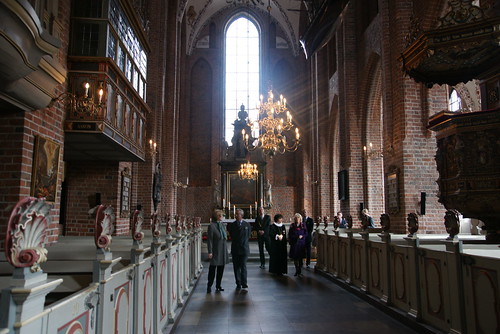
Even before the Euro, there were many units of currency which travelled across national borders, one of which was the ducat. The ducat was first minted in Sicily in the 1140s but would eventually spread across the continent for the next eight hundred odd years. Eurosceptics will be pleased to hear that Britain stuck with pounds, shillings and pence, but it still became one of Shakespeare’s most used currencies as a way of conveying extreme wealth. Ducat appears four times in Hamlet, most memorably in the prince's cry as he accidentally runs Polonius through as a reminder that he believes he’s killing his father-in-law.
But the ducat is just one of dozens of units of currency which crop up in Shakepeare’s plays as they span history and geography and in Angels and Ducats: Shakespeare’s Money & Medals, Barrie Cook, the curator of Medieval and Early Modern Coinage at the British Museum utilises this national collection to explain some of the history of these now obscure units of commerce and their meaning within the texts. The book's published to coincide with a display opening in April which like the Summer exhibitions, relates the objects to the Elizabethan and Jacobean periods, in theatrical economies of scale and the portrayal of royalty on the coins.
As Cook explains, for all the apparent obscurity that some of the language has now, Shakespeare was always concerned with making his stories lucid even if they were set in an earlier time and so although there was enough knowledge available to offer an accurate portrayal, he was unafraid to employ anachronisms as an aid to understanding. The Comedy of Errors, set in the ancient Mediterranean world pinions on the movement of “angels” and “ducats”. But they also provide a useful element of punning and allusion, “nobles” and “crowns” appearing in all the history plays both in plain speech and as a way of conveying satirically the authority being fought for.
But those of us perhaps slightly more interested in theatrical history will find most useful the chapter on how the business of acting was financed. Cook has compiled a chart itemising the cost of visiting the theatre in Shakespeare’s day and production budgets. What’s surprising is that theatre goers preferred comfort over visibility, the yard nearest the action (albeit standing) far cheaper than the upper galleries some way away from the stage, the exact opposite of the charging mechanics in modern theatres and concert halls were the cheap seats are at the very back, which in some older auditoriums might as well be in the pub next door.
The well chosen illustrations demonstrate that the physical nature of the currency hasn't changed that much across the centuries and almost always feature some monarch on one side, an indication of the denomination on the other. Cook also briefly touches on medals and they too follow a similar format which explains why they’re thought of as such an important part of our history. Some of the only illustrations we have of the notable Romans are the profiles which appear in archaeological discoveries, references to which are another way that Shakespeare is able make these ancient times and peoples more tangible.
Angels and Ducats: Shakespeare's Money and Medals by Barrie Cook is published by the British Museum. 2012. RRP: £9.99 paperback. ISBN: 9780714118215. Review copy supplied.






